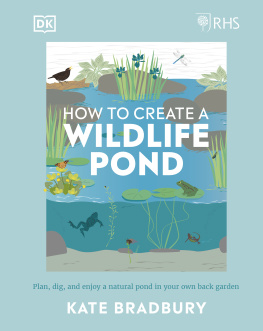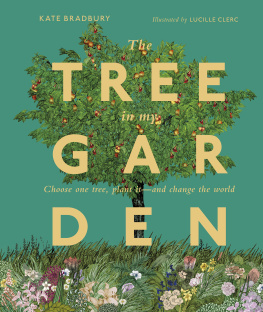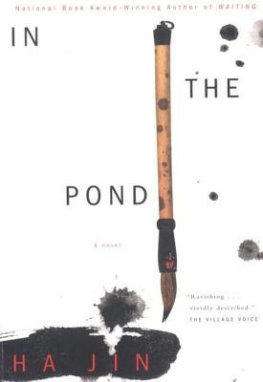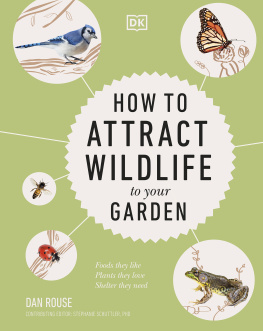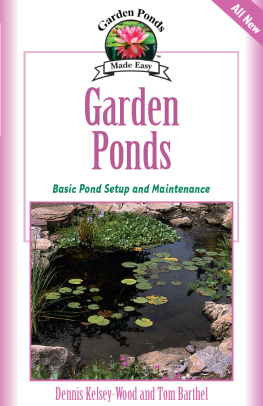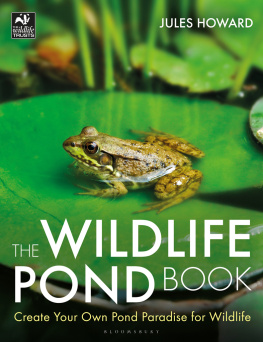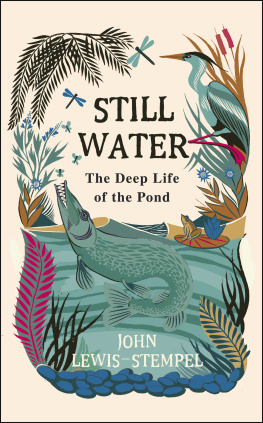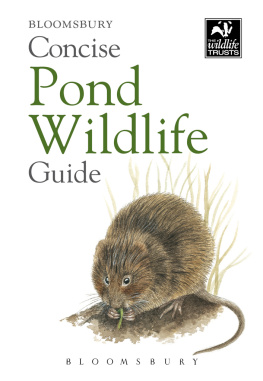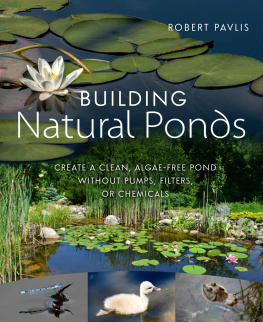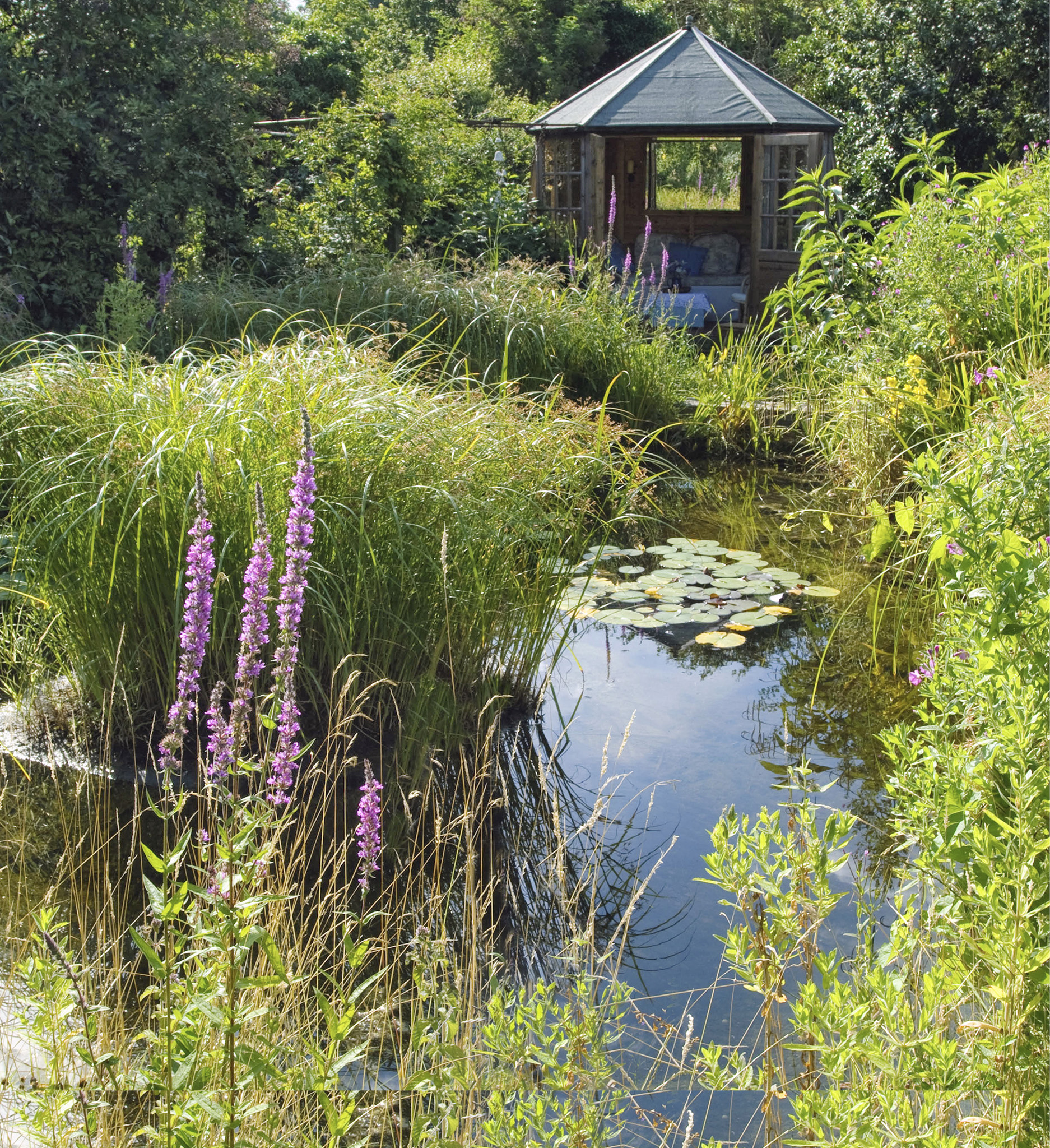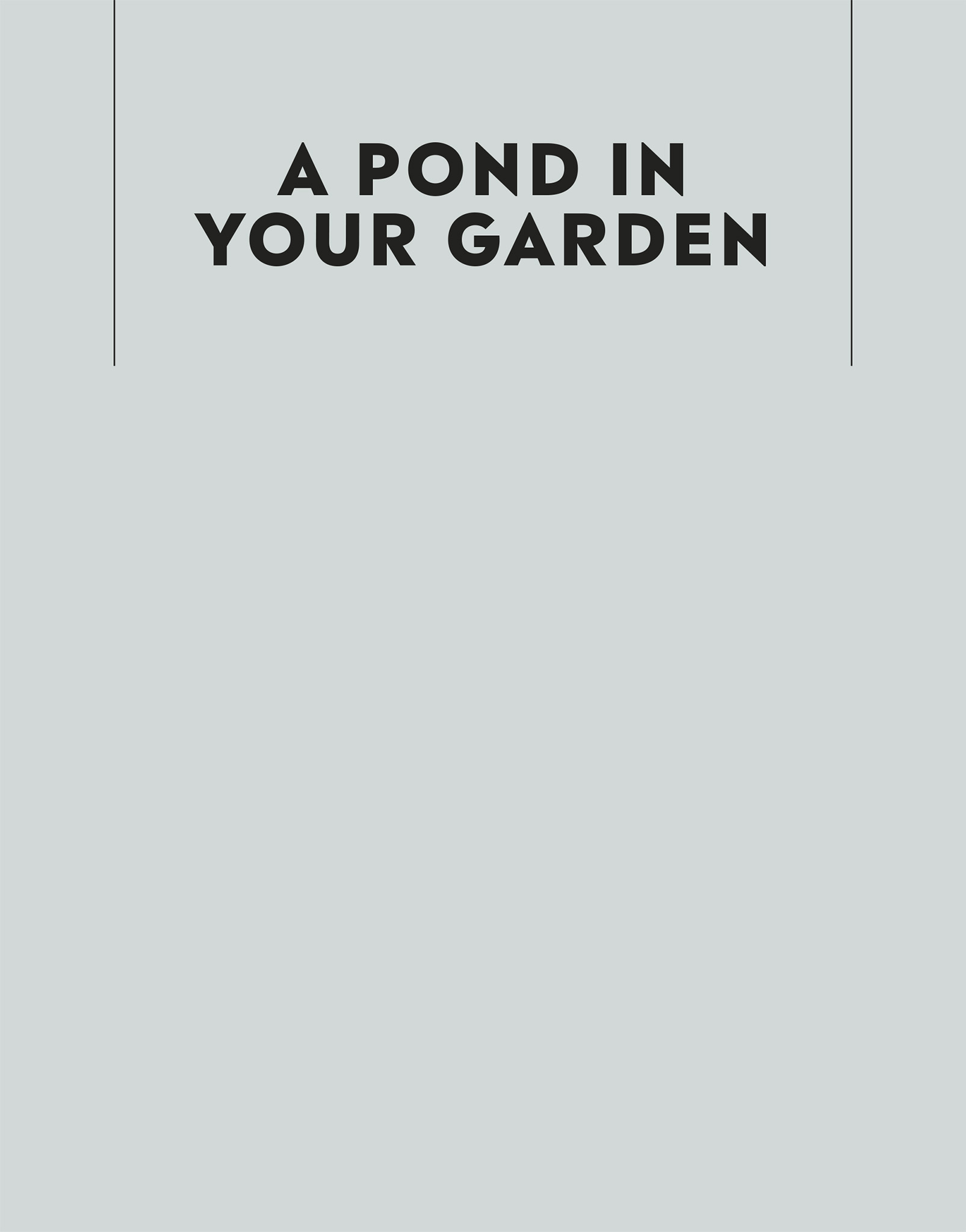introducing ponds
INTRODUCTION
What is a pond? A pond is about the best thing you can introduce to your garden. Crudely, its a body of water with some plants in it. It might be deep or shallow, round or kidney-shaped, formal or wild, edged with wildflowers, decking or paving slabs. It might have a pebble beach, tadpoles and whirligig beetles, or a few pond lilies beneath which newts glide and shelter.
A pond is the centre of your garden. Its life, its fun. Its where you will be drawn to as you wander around, where you will sit and contemplate the world. Its where you will spot things youve never seen before, marvel at the wonder of metamorphosis and gasp at the cruelty of nature, red in tooth and claw. Its magic, thats what it is. Magic and awe. What is a pond? Why, its the best thing ever.
WHERE DID PONDS COME FROM?
Ponds have been in existence for millennia. Small bodies of water would form from meandering rivers, natural low-lying depressions in the ground, holes left by fallen trees and beaver activity (which still happens, if we let it). Traditionally, there would be a pond in the corner of every field on farmland for livestock to drink from, while village ponds were essential for providing people with water. These ponds were also stocked with fish for eating. Mill ponds (complete with water wheels) were created to harness the power of water and provide energy for industry. Ornamental ponds became grand focal points in stately gardens across the world, which led to our parks and gardens featuring smaller versions of them, for a little piece of glamour outside our back door.
With every pond, big or small, formal or wild, wildlife has seized an opportunity. Amphibians may have evolved in footprint ponds made by dinosaurs and woolly mammoths. Later they would have ducked beneath the surface when a cow or horse dipped its mouth into a dew pond for a drink or when villagers jumped in for a wash. Many invertebrates have also evolved with ponds, either relying on them their whole lives or using them during part of their lifecycle. Ponds are essential for virtually all forms of life, from amphibians, fish and insects such as dragonflies and water beetles, to mammals and birds and even bees, for drinking. A pond is all things to all things.
A POND FOR ALL SEASONS
With a pond in your garden, you get to sit back and enjoy watching all the life that the pond brings in. At home, I stumble out each morning, while the kettle boils for tea, and look into the water. In spring I might see mating frogs and frogspawn, backswimmers and pond skaters, the first toad of the year. In summer I see beetles zipping around the pond edge and dragonflies dipping their abdomens into the water to lay eggs. Around the pond, masses of bees, flies and other insects gather on the flowers growing at the edges, while baby amphibians jump or crawl around my bare feet. In autumn I look for hedgehog trails and droppings, or bird footprints in the mud. In winter I might see ice on the surface, the morning sunlight reflecting back on frosted tufts of grass at the edge. I get lost in my pond I end up drinking cold tea nearly every day. What was that? Whats next? Who are you? Questions I ask all the time, thanks to a little body of water with some plants in it, outside my back door.
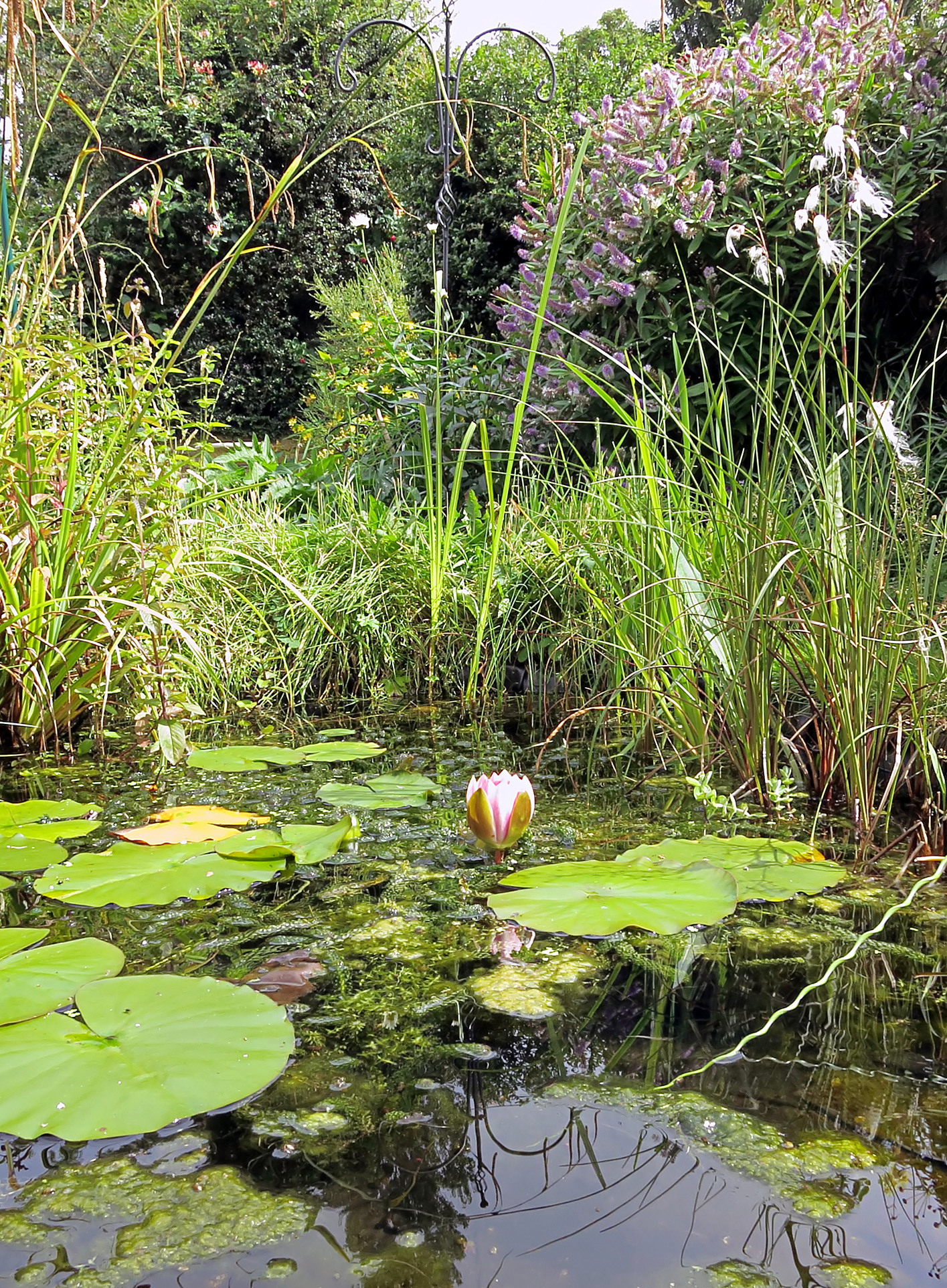
Pond in summer
Lush with growth, a pond in summer is full of life.
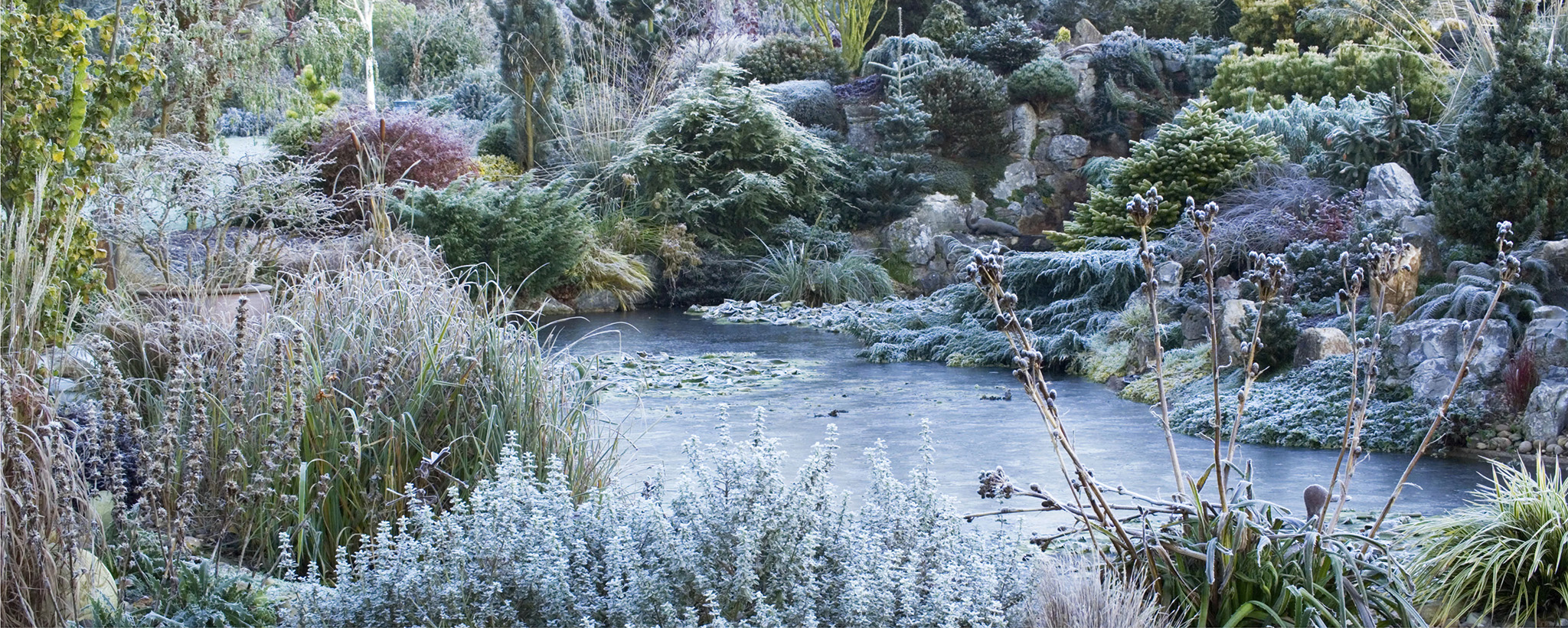
Icy beauty
A frozen pond offers little for those species above the surface, which are unable to use it for drinking and bathing. However, frogs, beetles and other pond life survive sheltered in the mud at the bottom.
WILDLIFE BENEFITS OF PONDS
Garden ponds support a host of wildlife, from the fish, amphibians and invertebrates that rely on them to breed, to the mammals and birds that need them to drink and bathe. A pond will be the most biodiverse part of your garden, often within weeks of you digging it.
Its difficult to overestimate the importance of ponds for wildlife. In the UK, ponds have steadily declined in both number and quality in the last century. Some 13 per cent less wildlife are using the remaining ponds than in the 1970s. While ponds are still widespread in much of Europe, some countries, such as the Netherlands and Switzerland, have lost 90 per cent of their ponds in recent years. Dew ponds have been replaced by cattle troughs, natural ponds have been filled or left to silt over and garden ponds have been removed in favour of low-maintenance outdoor rooms and smaller spaces.
A network of ponds can act as stepping stones, between which a huge variety of species can travel. Fewer ponds mean some species cant travel as easily, as they need to be near a source of water. This might cut off populations, leading to them becoming inbred and less resilient to disease and natural disasters. Cut-off populations will also be less able to adapt to the effects of climate change or other changes to habitat. And so, gradually, fewer ponds leads to less wildlife. Its as simple, and sad, as that.
Ponds are stepping stones. Without them wildlife populations can be cut off.

Under the surface
Plants (even duckweed) have a vital role in ponds, providing shelter for tadpoles and other invertebrate larvae.
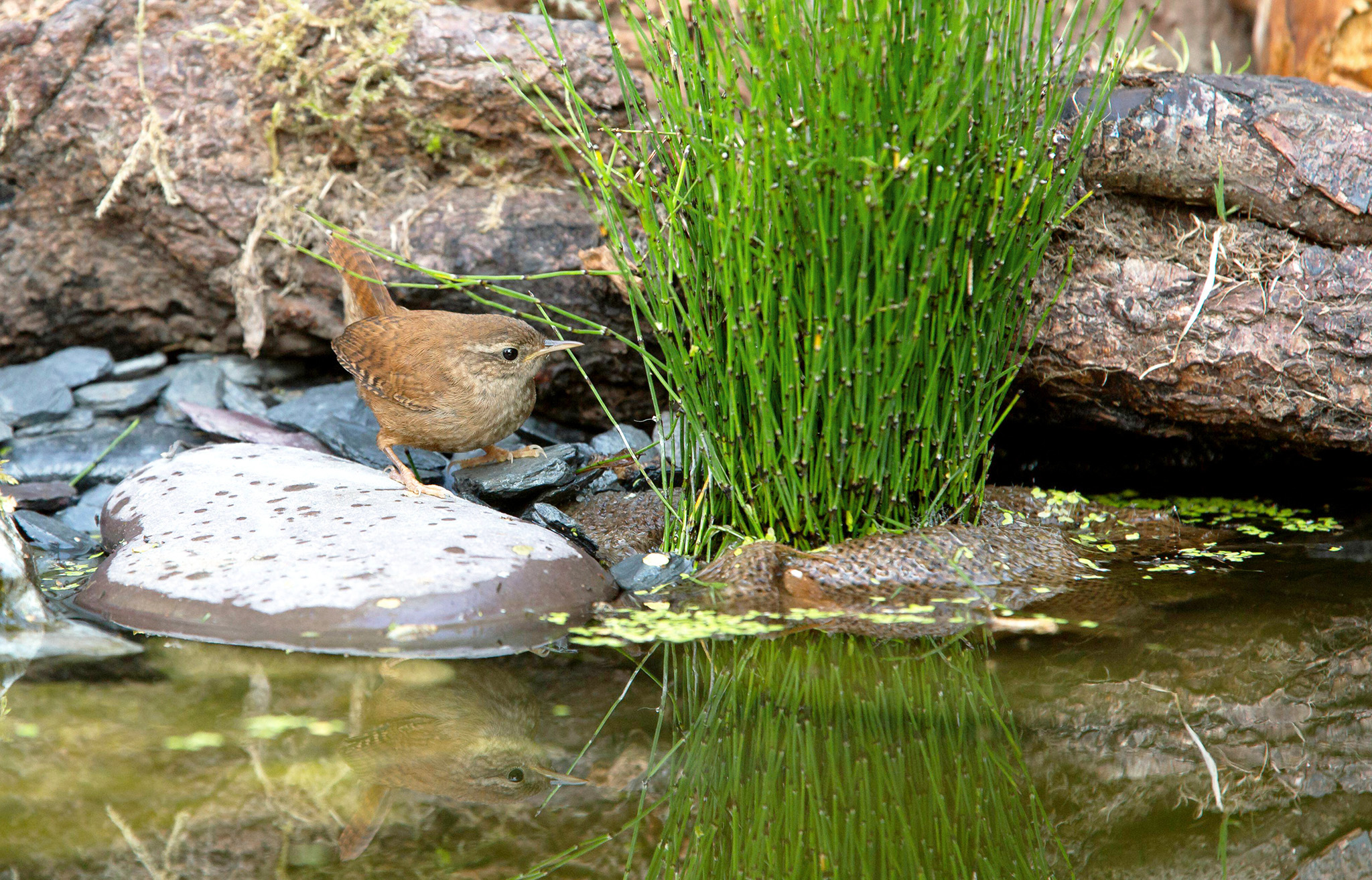
Drinking spot
A well-placed stone provides the perfect spot for this wren to stop for a drink.

Grassy margins
Long grass at the pond edge provides shelter for a huge range of species.
PONDS AND PEOPLE
We benefit from ponds, too. Studies have shown that being in, on or near water improves our mental health. Our blood pressure lowers and we feel calmer. Having even a small pond in your garden might make you feel better. And youll feel good about throwing a lifeline to wildlife that relies on water to exist, too.

